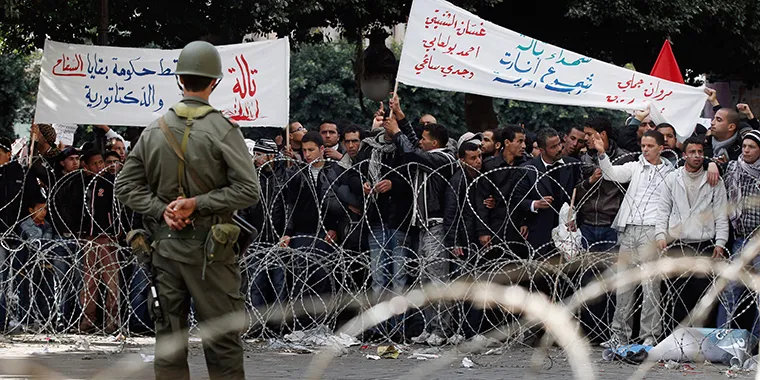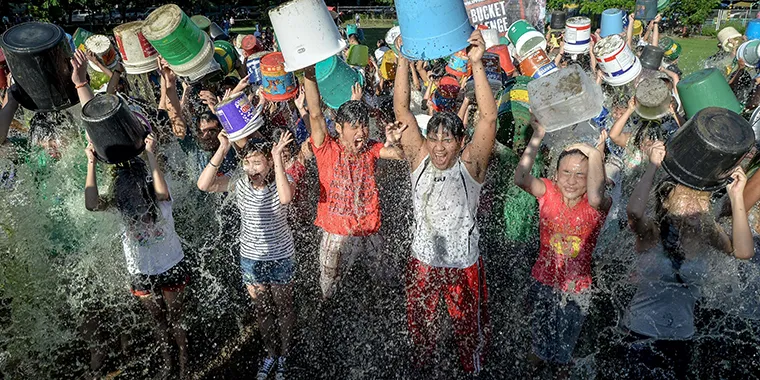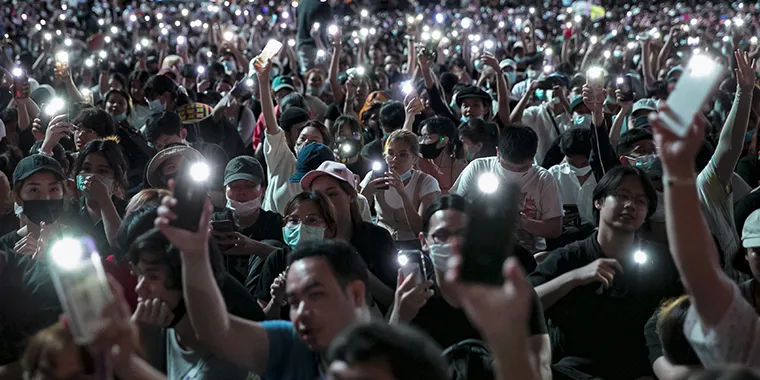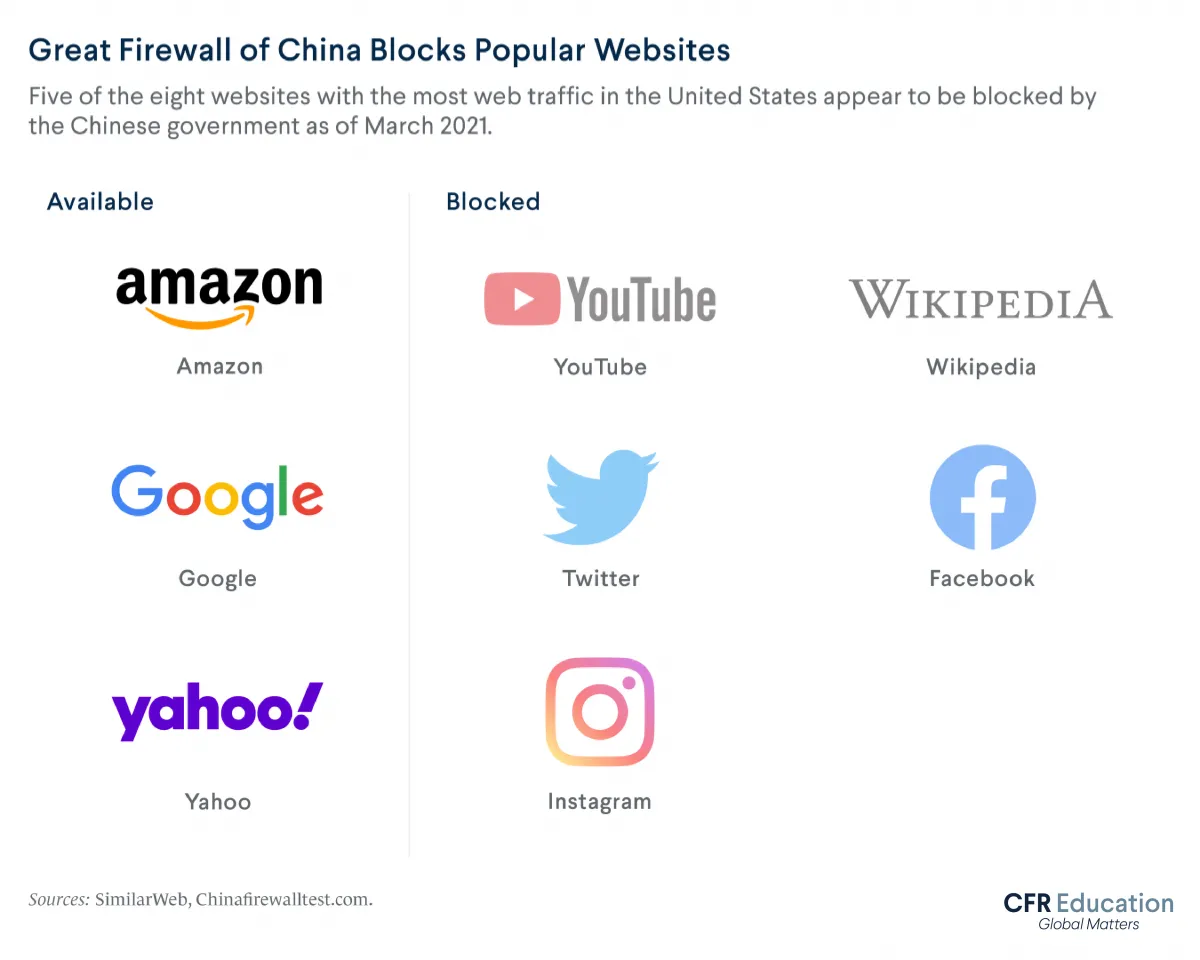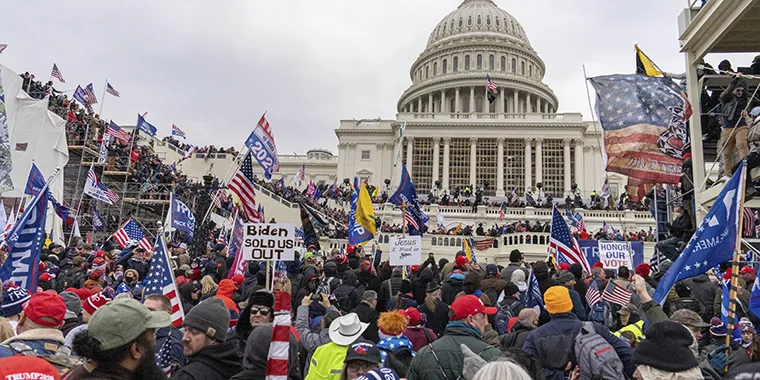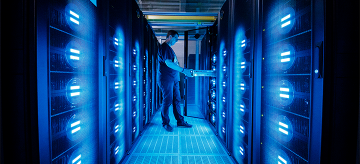Social Media: Revolutionizing Communication
Social media has connected people at lightning speeds and upended long-held monopolies on information. But like past innovations, it has also created major societal challenges.
For much of human history, news traveled slow—really slow. The traditional mode for spreading information was by word of mouth. However, things changed with the invention of the printing press. The fifteenth-century contraption helped usher in a new era of human communication. The printing press increased the number of books in circulation from thousands to ten million in less than two centuries, allowing information to spread faster and farther than ever before.
Today, social media joins a long list of innovations that have sped up the pace and broadened the reach of human communication. A few decades ago, speaking to friends and family overseas or out of state was a costly and sluggish endeavor. Postcards could take weeks to arrive. Phone calls were often considered a luxury. But with social media, billions of people around the globe can now exchange information with few financial or technical barriers.
Like past innovations, however, social media has proven to be a double-edged sword. The same platforms that connect users instantly and enable people to share fun vacation photos have also allowed hate speech and disinformation to spread globally.
In this resource, we'll reveal how both sides of social media’s blade have reshaped society, showing how the platforms can foster unprecedented unity but also create discord and division.
How has social media connected people?
Social media democratizes information: in many countries, a limited number of media organizations—and sometimes the governments that control them—decide what makes the news. Part of social media’s power stems from its ability to circumvent this gatekeeping and allow the public to decide what gets attention.
Take Myanmar, for example. In February 2021, a military coup ousted the country’s civilian government, ending a decade of democratic reforms. Protests quickly spread nationwide.
In response, the Tatmadaw—the official name for Myanmar’s military—stripped several newspapers of their operating licenses. Dozens of journalists were arrested for covering the anti-coup demonstrations.
Still, information about the protest movement spread on social media, particularly on Facebook. And though the military quickly ordered internet service providers to block the platform, protesters found ways around the firewall. Use of virtual private networks, which facilitate internet connections through encrypted servers that mask a user's identity and location, skyrocketed by more than 7,000 percent in the days following the coup.
Social media drives mass participation—and has also been used to catalyze mass uprisings, as the world witnessed in Tunisia in 2010.
That year, a Tunisian street vendor named Mohamed Bouazizi set himself on fire outside a local government office after police confiscated his produce stand. The twenty-six-year-old’s act of desperation and defiance kicked off demonstrations. Protests against inequality and corruption spread throughout Tunisia. Bouazizi’s act of immolation served as one of several incidents that sparked the wave of regional protests known as the Arab uprisings, or Arab Spring.
In Tunisia, activists used Facebook, which had launched in Arabic just one year before, to organize, document, and promote protests. Research later showed that nearly three-quarters of Tunisians used social media to stay informed on the fast-moving revolution. And people who were more active internet users were also more likely to participate in the protests.
In January 2011, just days after Bouazizi succumbed to his injuries, Tunisian dictator Zine al-Abidine Ben Ali fled to Saudi Arabia, marking the end of his twenty-three-year rule.
Social media helps raise awareness: it has the power to create movements that attract widespread public and financial support.
Take the amyotrophic lateral sclerosis (ALS) Ice Bucket Challenge, for example. The viral campaign, which involved social media users dousing themselves in ice water and daring their friends to do the same, raised awareness for the ALS Association. The initiative raised $115 million in the first six weeks after it launched in 2014. The fundraising allowed the organization to boost its annual research funding by nearly 200 percent. Since then, ALS researchers have made significant scientific discoveries.
Meanwhile, many other online campaigns have had tangible offline consequences. The 2017 #MeToo movement, for example, grew from an online solidarity campaign to a wide-reaching and global movement against sexual harassment and assault. The #MeToo movement has since been linked to numerous high-profile resignations and criminal cases. A movement starting in Argentina against violence against women, #NiUnaMenos (“not one less”), has also spread to multiple countries. This effort has helped expand transnational solidarity for women’s rights and expose abuses.
If you’ve been sexually harassed or assaulted write ‘me too’ as a reply to this tweet. pic.twitter.com/k2oeCiUf9n
— Alyssa Milano (@Alyssa_Milano) October 15, 2017
How has social media harmed people?
Social media also enables state surveillance: governments have also harnessed the connectivity of social media to surveil public discourse. In fact, democracy and human rights watchdog Freedom House found in 2019 that more than 60 percent of the countries it monitors have set up social media surveillance programs.
These efforts are clearly visible in Thailand, where demonstrators have been calling for constitutional amendments and reforms to the country’s monarchy since a disputed election in 2019. In response, the government, which first came to power in a 2014 military coup, has surveilled social media platforms and cracked down on content critical of the government.
Police have also targeted and persecuted internet users under computer-crimes acts and what the government labels anti–fake news laws. Critics assert that these laws stifle dissent. Just after the 2019 vote, for example, police arrested nine people for posting Facebook comments that alleged corruption in the election. Authorities even arrested a man in 2015 for making fun of King Bhumibol Adulyadej’s dog on Facebook.
Social media is subject to state censorship: some countries have developed robust censorship regimes, curbing dissent before it even begins.
Most notably, China maintains what some have called the Great Firewall. This highly effective system of censorship blocks foreign websites such as Facebook and Twitter. Beijing also monitors online content and discourse.
In 2017, for instance, China blocked images of Winnie the Pooh after internet users began posting about the cuddly bear’s resemblance to Chinese President Xi Jinping. More recently, the government has censored Hong Kong's pro-democracy protests with mass detention camps in Xinjiang province. The Chinese government has also removed Peng Shuai’s name from the internet after she accused a Chinese Communist Party (CCP) official of sexual assault.
Meanwhile, some governments have taken censorship to the next level and shut down the internet altogether to quell unrest. Of the sixty-five countries Freedom House monitors for internet freedom, a record high of twenty-two nations imposed intentional disruptions to connectivity in 2020.
Social media provides fertile ground for radicalization and recruitment. Its connective power has also been used to spread destructive propaganda and aid terrorist efforts.
For example, social media helped fuel the rise of the self-proclaimed Islamic State, also known as ISIS. By 2014, the group operated several multilingual media centers that interacted with potential new recruits. Islamic State media centers produced high-quality propaganda content, including polished videos of violence and glorified images of war. The Islamic State’s digital propaganda, experts say, was incredibly effective at drawing thousands of new recruits.
Extremist content has also come to pose a major threat to security within the United States. According to research by the National Consortium for the Study of Terrorism and Responses to Terrorism, the vast majority of recent far-right, far-left, and Islamist extremists in the country are radicalized online [PDF].
Social media also enables the spread of disinformation. Functioning as largely unregulated digital public squares, social media platforms are highly vulnerable to the spread of misleading and false content. Sometimes social media platforms can spread deliberate disinformation—a fact that came into stark relief in the run-up to the 2016 U.S. presidential election.
Ahead of the vote, Russia directed an online manipulation campaign to support then presidential candidate Donald Trump. The purpose of the Russian campaign was to undermine faith in the election process. U.S. authorities determined that the St. Petersburg−based Internet Research Agency (IRA) spearheaded the effort. The IRA was found to be conducting an “information warfare campaign designed to spread disinformation” in the United States.
Along with smearing Trump’s Democratic challenger, Hillary Clinton, the IRA inflamed societal rifts. In May 2016, two IRA Facebook pages, each with hundreds of thousands of followers, ran paid advertisements that promoted competing protests outside an Islamic center in Texas. People attended both rallies, one titled “Stop Islamization of Texas” and the other "Save Islamic Knowledge," resulting in a tense standoff between the two sides.
Facebook later estimated the IRA posted eighty thousand times on the platform, reaching 126 million users.
Throughout Trump’s tenure, social media platforms continued to struggle with disinformation. After the 2020 election, which Trump lost, false news of election fraud spread across the internet. Trump himself promoted the incorrect claim that the vote had been compromised. Many experts have highlighted this as a contributing factor to the violent storming of the U.S. Capitol on January 6, 2021. The incident led Facebook and Twitter to take the extraordinary step of removing Trump, a sitting U.S. president, from the platforms.
Blunting social media’s blade
Social media seems integral to society, but the platforms are relatively new. Facebook was founded in 2004 and Twitter in 2006, both as digital public squares where people could share their thoughts and daily lives.
But as the platforms’ user bases skyrocketed, they’ve been forced into roles normally reserved for governments and traditional media organizations. Today, social media organizations must decide what constitutes acceptable speech and how to handle objectionable content. Facebook and Twitter say that holding platforms accountable for the speech of their billions of users is infeasible. However, critics maintain that, given the platforms’ great clout, their refusal to take responsibility is unacceptable.
The platforms have also come under fire for prioritizing profits at the expense of social cohesion and user privacy. For instance, Facebook earns the vast majority of its revenue from advertising. To maximize activity on its platform, it collects user data and feeds it into a computerized tool called an algorithm that automatically presents users with new, personalized content to keep them scrolling and liking.
Amid outcry from lawmakers and activists, Facebook has adjusted its lucrative platform. But CEO Mark Zuckerberg has called on governments around the world to play a more active role in regulating the internet. Former Twitter CEO Jack Dorsey has agreed, echoing Zuckerberg’s sentiment that the internet needs “new rules.”
In response to those issues, governments have begun exploring the possibility of imposing more robust regulatory regimes. In the United States, that has involved proposals that range from breaking up social media companies to forming a new federal agency to protect the public against the drawbacks of social media.
Although government approaches sometimes differ, many people believe reforms are necessary to preserve the benefits of social media and its harms are mitigated.

